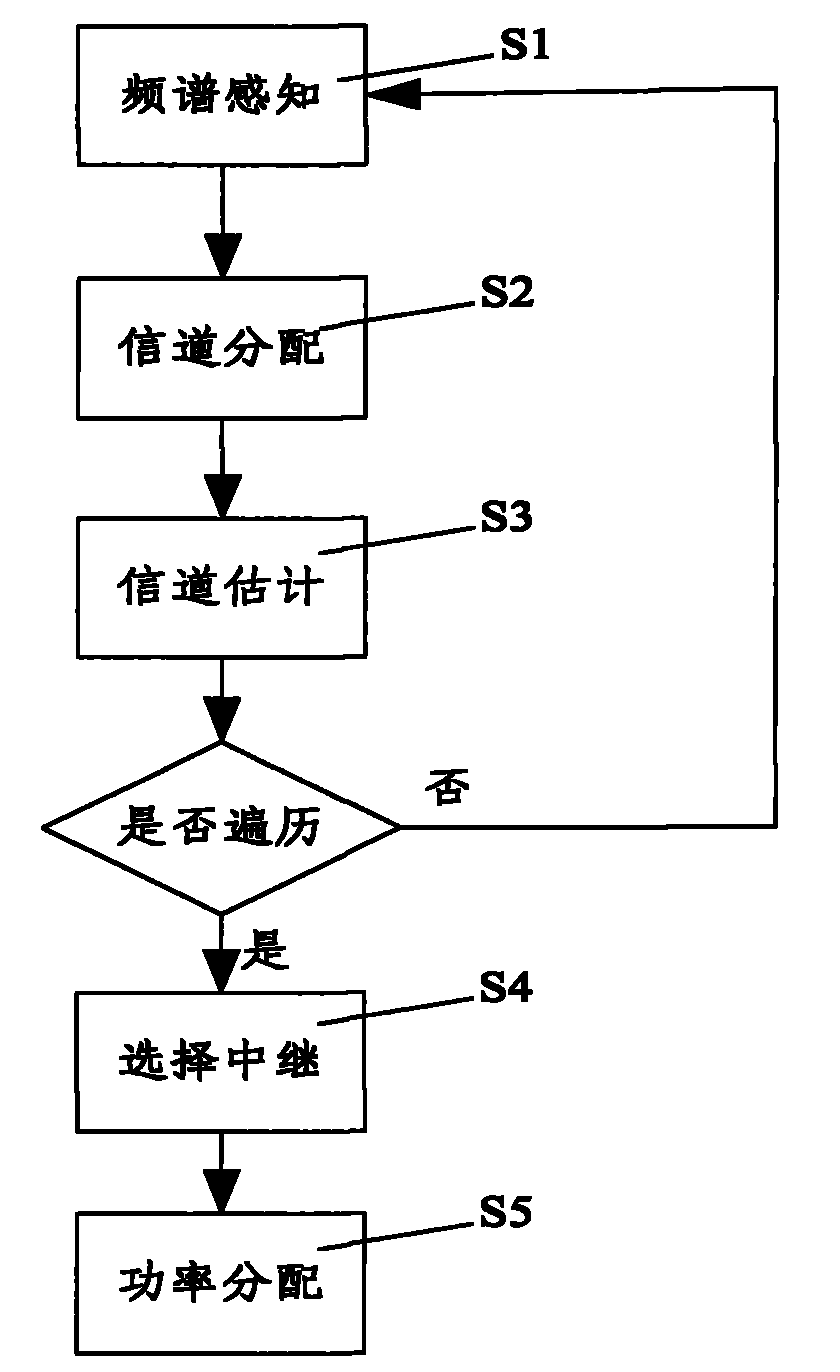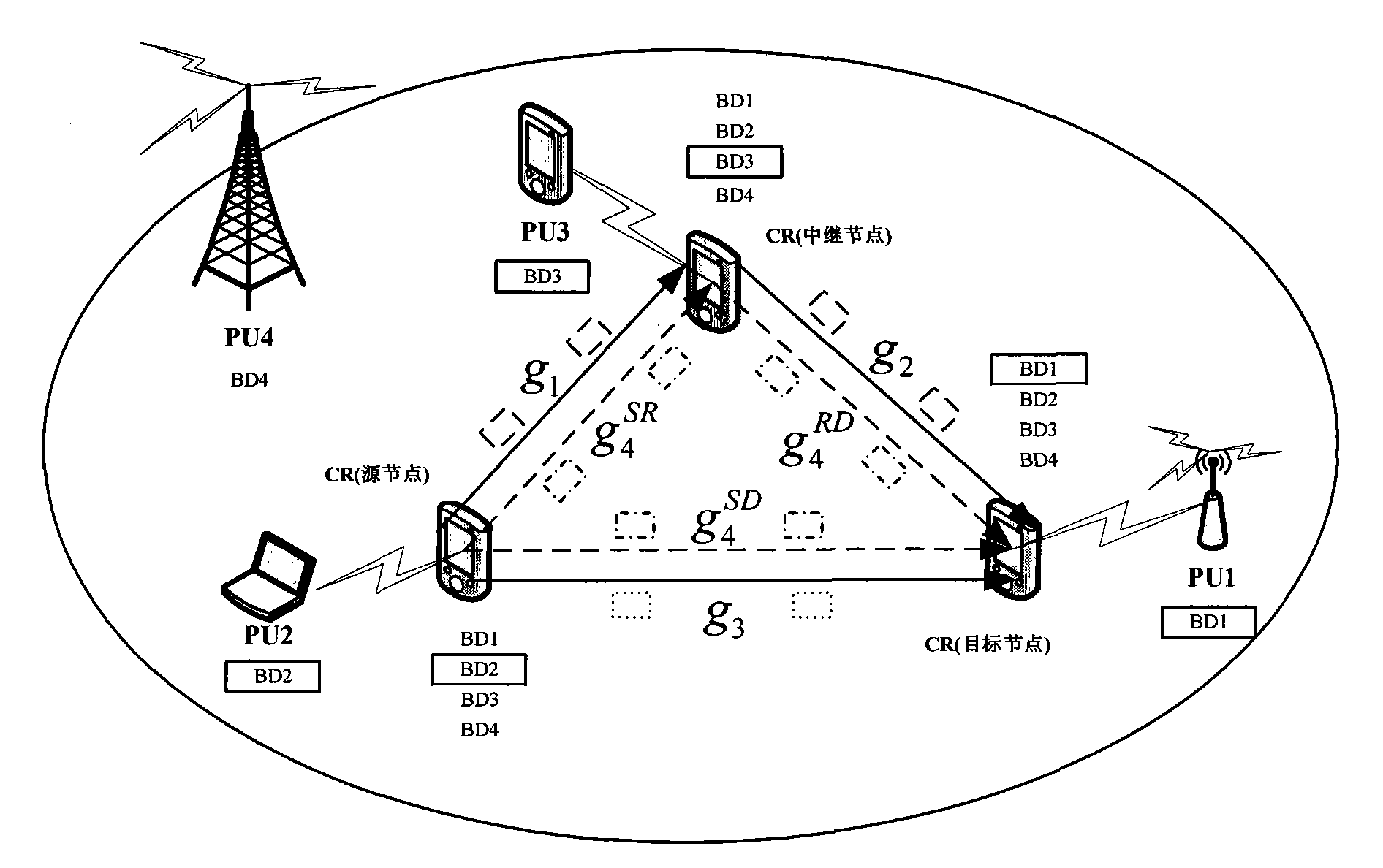Multiple terminal cooperative communication method in cognition wireless network
A cognitive wireless network and cooperative communication technology, applied in the field of multi-terminal cooperative communication in cognitive wireless network, can solve the problems of low utilization rate of spectrum resources, neglect of spectrum sensing characteristics of intelligent terminals, single transmission mode, etc., and achieve energy consumption cost Minimize, increase the overall data transfer rate, control the effect of power consumption
- Summary
- Abstract
- Description
- Claims
- Application Information
AI Technical Summary
Problems solved by technology
Method used
Image
Examples
Embodiment Construction
[0031] In order to make the purpose, content, and advantages of the present invention clearer, the implementation manners of the present invention will be further described in detail below in conjunction with the accompanying drawings.
[0032] Combine below figure 2 , 3 and 4 explain method embodiments of the present invention.
[0033] Such as figure 2 Shown is the application network scenario diagram of this embodiment. The ones with boxes are the frequency bands in use, and the ones without boxes are the unused frequency bands. For example, for PU (primary user, primary user) 2, the frequency band used by it is BD2, where BD is an abbreviation of frequency band, which means a frequency band.
[0034] Such as Figure 4 Shown is the application network model diagram of this embodiment. include:
[0035]Reconfigurable physical layer interface: The deployment of the network needs to be based on a reconfigurable hardware platform. The deployment of the physical layer ...
PUM
 Login to View More
Login to View More Abstract
Description
Claims
Application Information
 Login to View More
Login to View More - R&D
- Intellectual Property
- Life Sciences
- Materials
- Tech Scout
- Unparalleled Data Quality
- Higher Quality Content
- 60% Fewer Hallucinations
Browse by: Latest US Patents, China's latest patents, Technical Efficacy Thesaurus, Application Domain, Technology Topic, Popular Technical Reports.
© 2025 PatSnap. All rights reserved.Legal|Privacy policy|Modern Slavery Act Transparency Statement|Sitemap|About US| Contact US: help@patsnap.com



